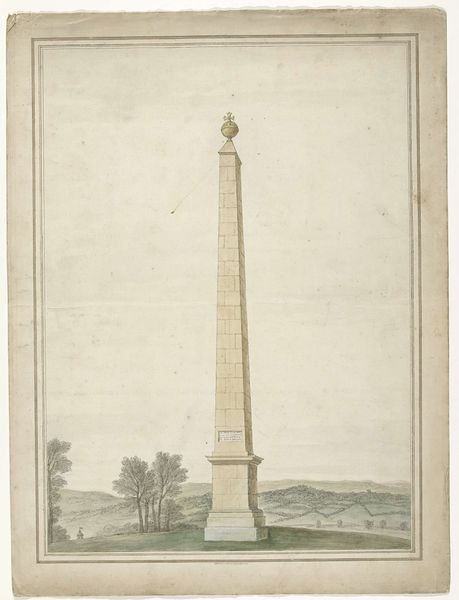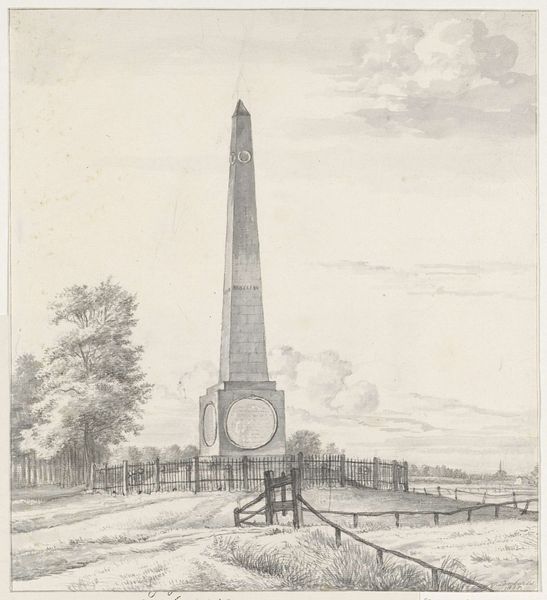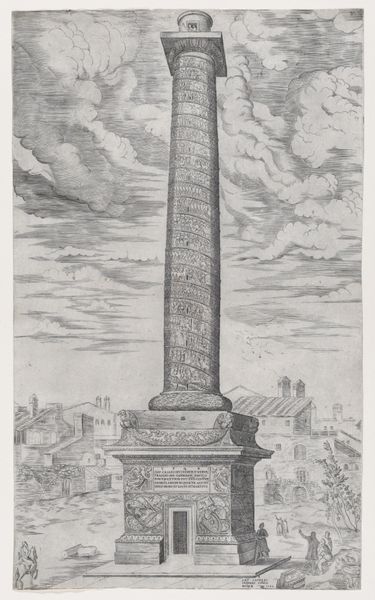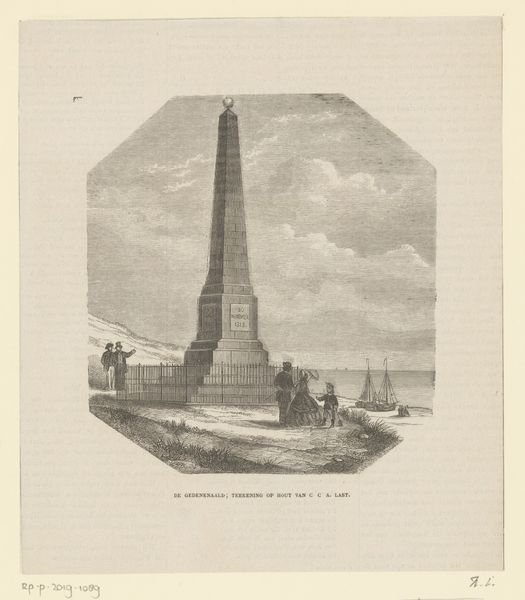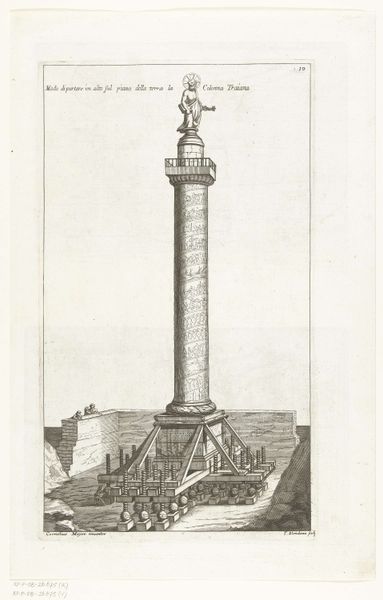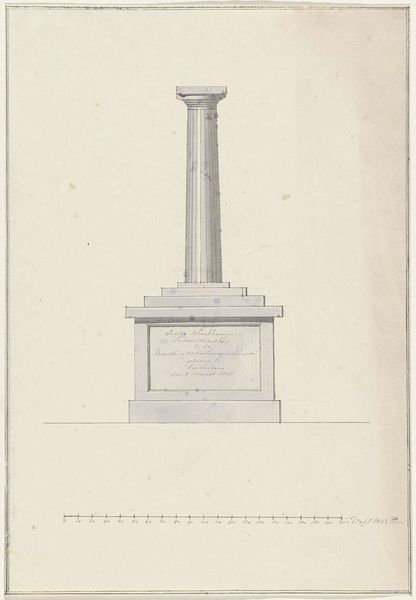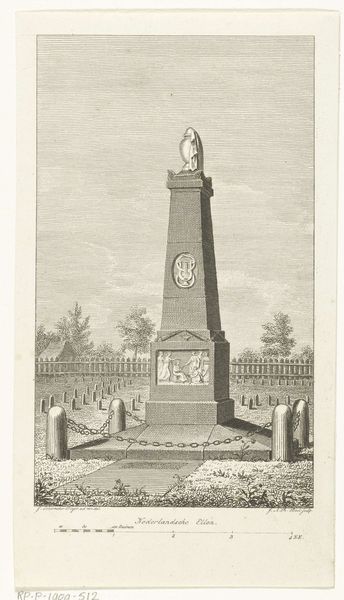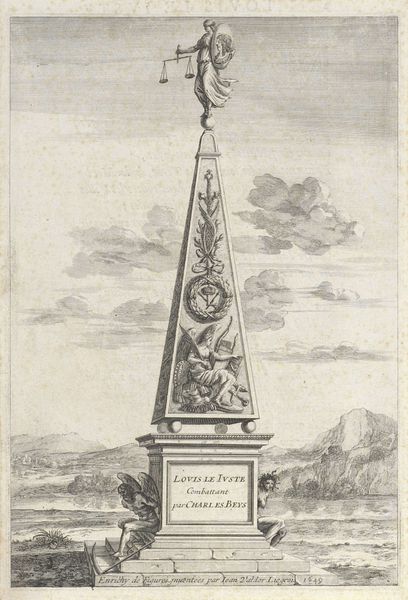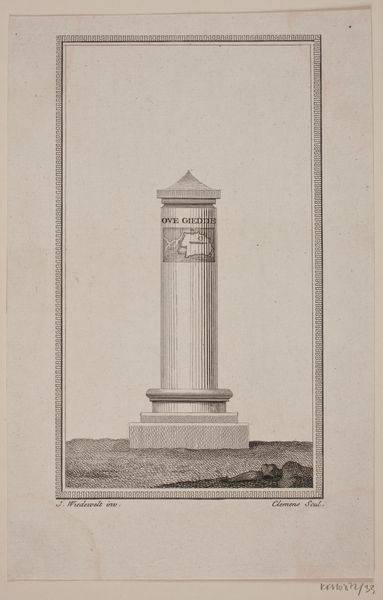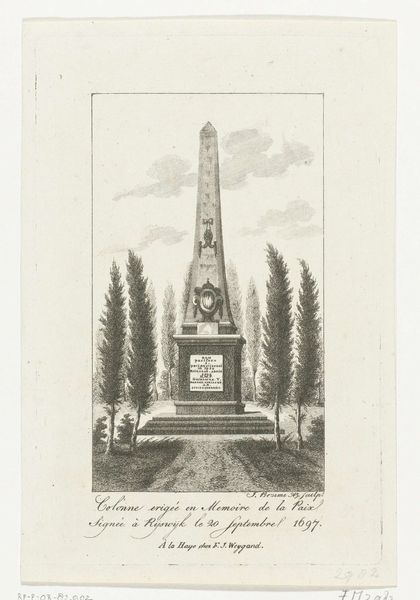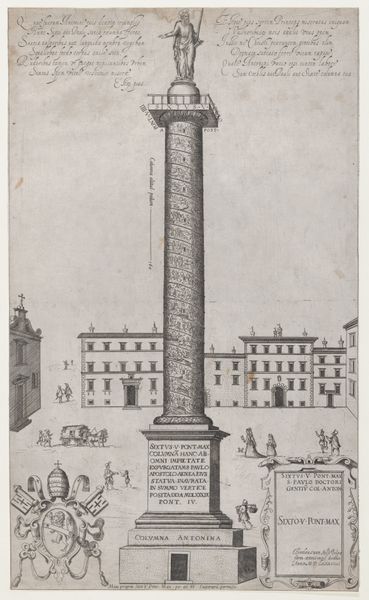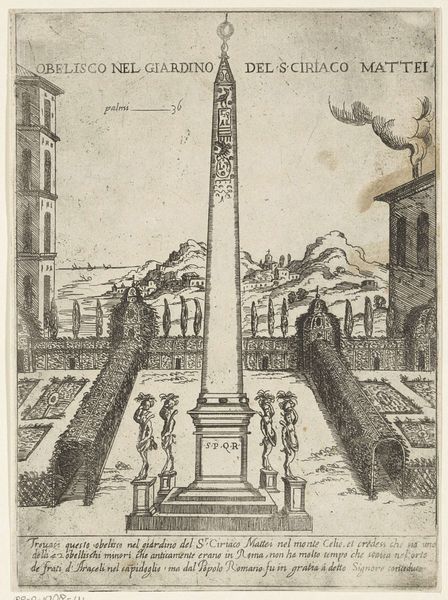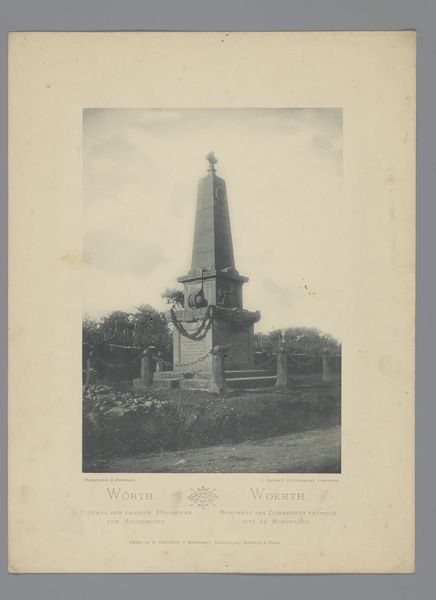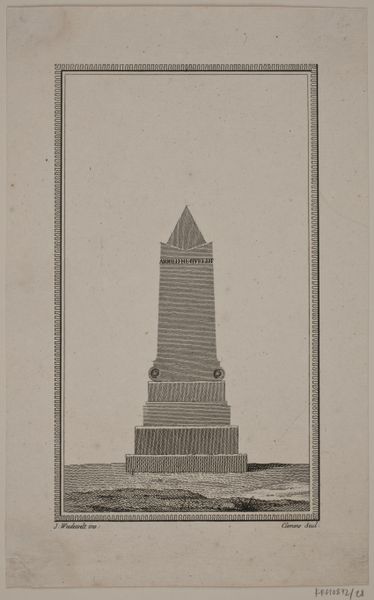
drawing, pencil, architecture
#
drawing
#
landscape
#
geometric
#
pencil
#
line
#
architecture
Dimensions: height 310 mm, width 235 mm
Copyright: Rijks Museum: Open Domain
Pierre Jacques Goetghebuer made this drawing of a proposed monument to Waterloo in the early 19th century. It's a design for a public monument, an obelisk to commemorate the famous battle. Looking at this image, we might consider how public monuments function within society. What visual language do they employ to convey meaning? The obelisk form, of course, carries historical weight, recalling ancient Egyptian traditions of memorializing power and victory. This proposed monument was designed in Belgium, not long after the battle in 1815. Belgium itself was in a period of transition, having been part of the Austrian Netherlands, then annexed by France, and later becoming part of the Kingdom of the Netherlands. The proposed monument reflects a desire to assert a new kind of civic identity. To fully understand this drawing, we might delve into the archives of the period, looking at civic plans and discussions around national identity. Art, in this context, is always a reflection of social and institutional forces.
Comments
No comments
Be the first to comment and join the conversation on the ultimate creative platform.
